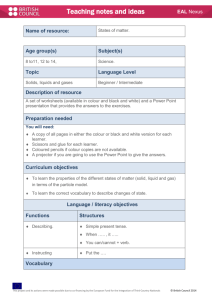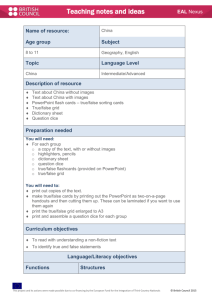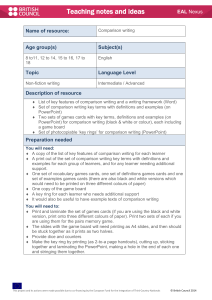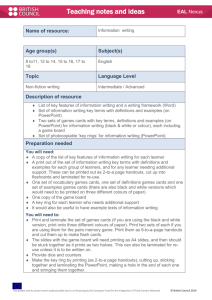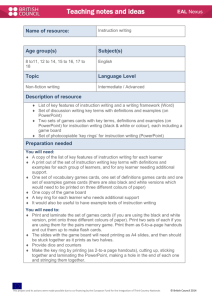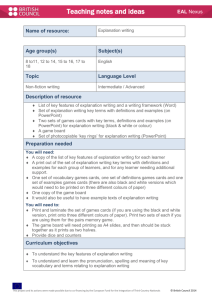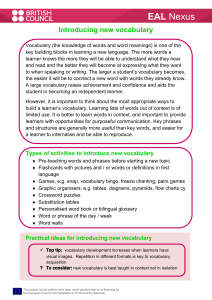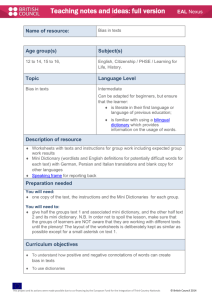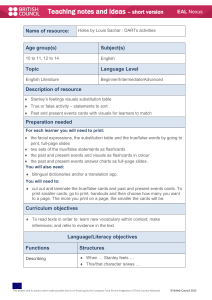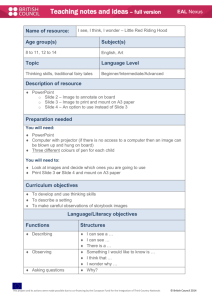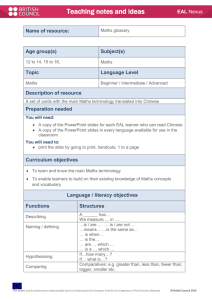Short version - EAL Nexus
advertisement
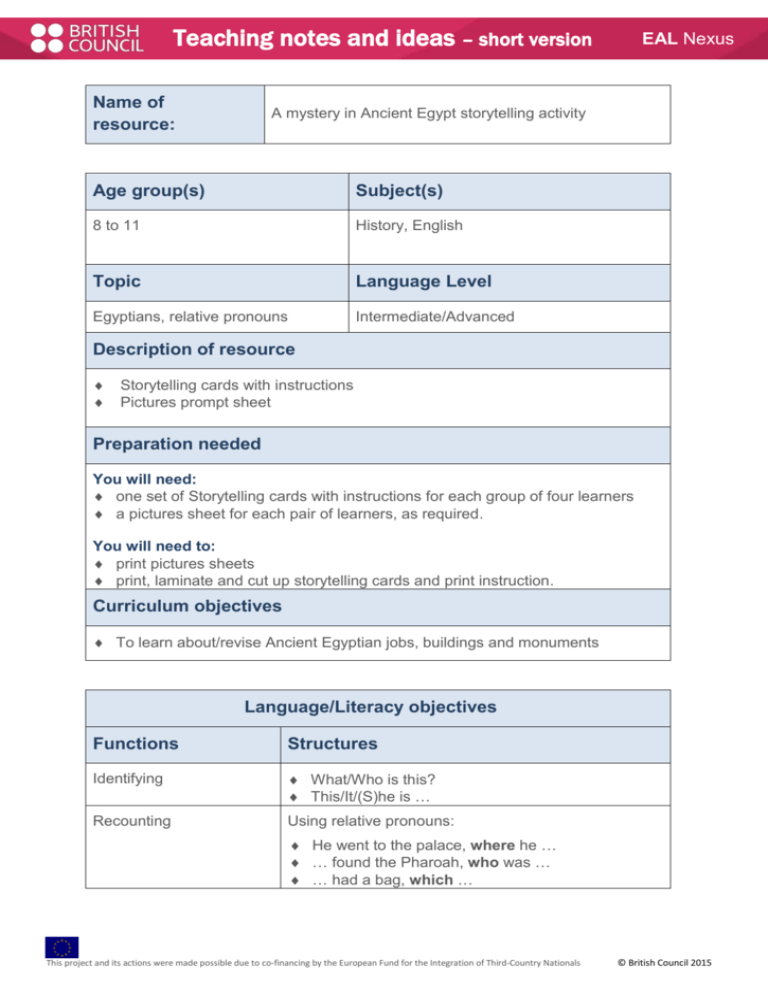
Teaching notes and ideas – short version Name of resource: EAL Nexus A mystery in Ancient Egypt storytelling activity Age group(s) Subject(s) 8 to 11 History, English Topic Language Level Egyptians, relative pronouns Intermediate/Advanced Description of resource Storytelling cards with instructions Pictures prompt sheet Preparation needed You will need: one set of Storytelling cards with instructions for each group of four learners a pictures sheet for each pair of learners, as required. You will need to: print pictures sheets print, laminate and cut up storytelling cards and print instruction. Curriculum objectives To learn about/revise Ancient Egyptian jobs, buildings and monuments Language/Literacy objectives Functions Structures Identifying What/Who is this? This/It/(S)he is … Recounting Using relative pronouns: He went to the palace, where he … … found the Pharoah, who was … … had a bag, which … This project and its actions were made possible due to co-financing by the European Fund for the Integration of Third-Country Nationals © British Council 2015 EAL Nexus Vocabulary detective, temple, priest, priestess, builder, farmer, altar box , sphinx, pharaoh, prince, jewel, casket This resource could be used: with the whole class with a small group Ideas for using the resource What to do Elicit the vocabulary by showing the relevant pictures and asking ‘What is this?’ You could play ‘I went to market’ to embed the words. Elicit the relative clause structure Show picture three and write ‘This is the Pharaoh’. Then ask ‘Which word is the noun?’ (Pharaoh) ‘How can we add more information about the noun without starting a new sentence?’ Elicit ‘who’ for a person. Repeat with a thing (which) and finally a place (where). E.g. This is the pharaoh who ruled in Ancient Egypt. Speaking practice – Play the game ‘who, which, where’. This is a teacher-led, whole class activity which practises relative clauses. Write the three words on the whiteboard like this: 1. who 2. which 3. where Say a noun, either a person, an object, or a place. You could use the nouns from the pictures sheet. Learners could then say a complex sentence using a relative pronoun to their talk partner. A mystery in Ancient Egypt storytelling activity – ‘Who stole the necklace?’ Demonstrate this activity to the whole class first by playing the start of the game with two or three learners. There is a set of learners’ instructions with the activity: Instructions Aim: Help Topher find the Pharaoh’s stolen necklace. This project and its actions were made possible due to co-financing by the European Fund for the Integration of Third-Country Nationals © British Council 2015 EAL Nexus Play in groups of four or three. Share a set of cards equally between the players. Players keep cards face up. Take turns to lay down the cards. The player with card number one goes first and lays it down. They must read out loud what is on the card. The player with card number two does the same and then adds the correct relative pronoun: ‘where’, ‘which’ or ‘who’. The player with card number three goes next. Not all the cards need a relative pronoun. Discover together who stole the necklace! Follow on Play the game again, but this time each player reads the story from the start every go. It takes longer but it really re-enforces the relative pronouns. Alternatively, the whole group could re-read the story together, inserting the correct relative pronouns. Possible extension activities ♦ Use the second set of cards, which have no words on them, as prompts for writing the recount. ♦ Learners could write a newspaper or police report of the incident. ♦ More relative pronouns could be taught (whom, whose, that, etc.). ♦ This is a highly scaffolded activity. To ensure that the learners are able to apply relative clauses in independent writing, recap them before the next piece of independent writing. This project and its actions were made possible due to co-financing by the European Fund for the Integration of Third-Country Nationals © British Council 2015
